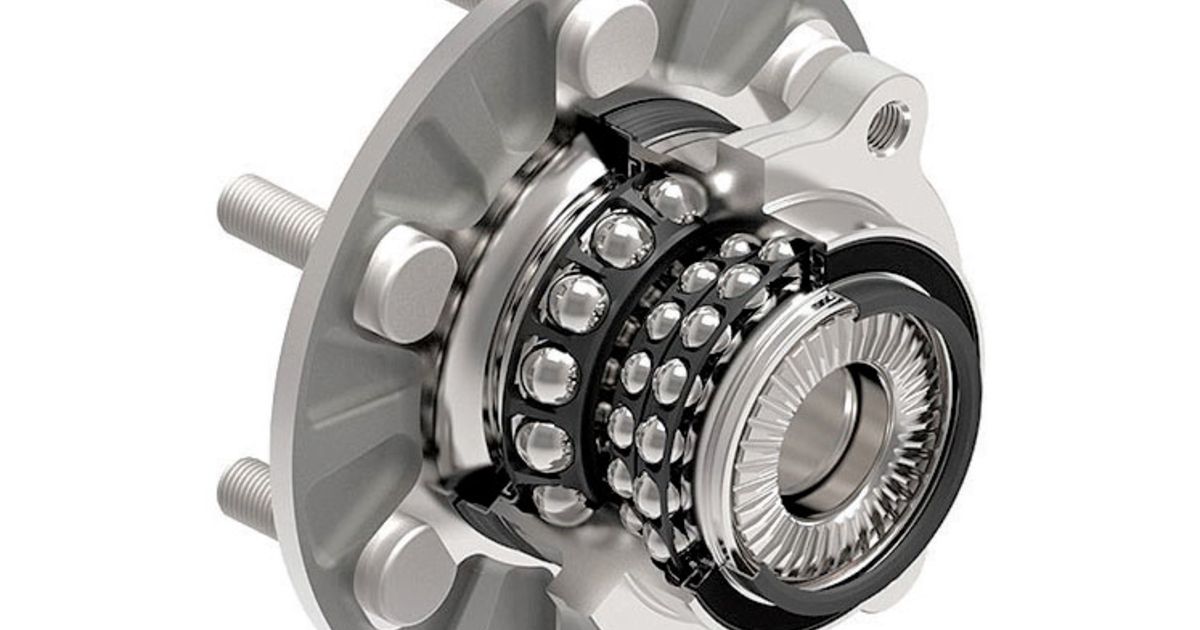
A new wheel bearing from German supplier Schaeffler could lead to efficiency improvements in battery-electric vehicles.
The supplier’s new TriFinity design differs from standard two-row ball bearings or two-row tapered wheel bearings on the market today by generating less friction, said Michael Eastman, regional head of Schaeffler‘s wheel bearings business unit. This is done through a unique, three-row ball bearing design that is no larger than a standard two-row bearing but can transfer bigger axle loads, last longer and have less friction, according Schaeffler.
“The concept was initially focused on trying to improve capacity density,” Eastman told Automotive News.
“The initial concept wasn’t developed with BEVs in mind,” he said. But “the TriFinity bearing was really optimized around the idea that we need to do more on the friction side to benefit these larger electric vehicles. There’s a ton of hype around electric pickups in the North American market, and that was really where our focus was.”
The innovation comes as suppliers and automakers look for ideas to increase BEV efficiency and address range anxiety, a potential hurdle to wider EV adoption.
Changing a vehicle’s wheel bearing design might seem like a minor alteration in the grand scheme of things, but the results add up. Eastman said the company’s testing shows that it can reduce friction by up to half compared with a typical bearing used now.
The reduced weight and a 24 percent improvement in load capacity means that the TriFinity bearing can help to reduce the vehicle’s electricity consumption, according to the company.
“Having said that, BEVs are not the only place it can be used,” Eastman said. “The friction benefit is there whether it’s a battery-electric vehicle, a hybrid vehicle or a standard internal combustion-engine vehicle.”
Eastman said the bearing can also benefit automakers looking to redesign existing internal combustion engine vehicles to offer hybrid or BEV variations. TriFinity takes up the same amount of space as standard two-row versions or can be even smaller.
“Maybe OEMs don’t want to go through a complete redesign of the entire wheel bearing. If that has to grow, then everything surrounding it — the knuckle, the brakes, everything — has to change, too,” he said. “The TriFinity bearing helps us to put a little more capacity into the same package.”
Eastman said the initial concept for the design emerged in 2009, but work on it began in earnest around 2019 by teams in North America and Europe.
The bearing will go into production late this year or in early 2023. Eastman said Schaeffler has entered into a contract to supply it to an automaker, but he declined to name the company.
The rollout comes shortly after Schaeffler established a new business division dedicated to bearings this year, helmed in North America by Eastman.
The company believes there is growth potential in the segment as the industry continues to electrify.
“There’s a laser focus within this division on the bearings themselves and leveraging synergies across the different applications and product types,” he said. “We have to be able to make sure we’re using resources as efficiently as possible, that we’re developing best practices and developing solutions that the market and our customers need.”